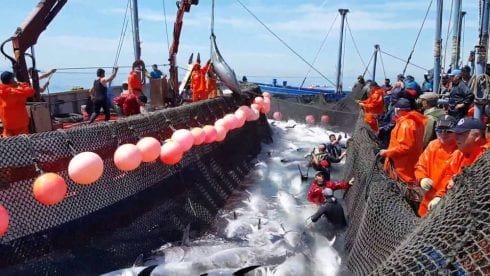ETHYLENE oxide did not mean anything to most people until just a couple of weeks ago, but that all changed with a country-wide alert warning consumers about the presence of the potentially cancerous compound in certain types of ice cream (as reported by The Olive Press).
However, experts have revealed that this is far from the only instance where the substance has been detected, with over 165 alerts this year for different food products.
Valencia-based research centre Ainia has recently been accredited as the first Spanish laboratory authorised to test for the presence of ethylene oxide (ETO) in a wide range of foodstuffs – and the results are alarming.
According to Ainia, the problem stems from the use of ETO as a pesticide in certain non-European countries where it is legal, whereas in Europe it is not.
As early as last year, European food safety agencies detected levels of ETO in several batches of sesame seeds produced in India that were 1,000 times higher than the limit authorised by the EU.
This prompted a tightening-up of checks and controls, triggering a surge in detections.
Ainia food safety expert Roberto Ortuño explains that ETO is classed as a category 1B mutagen, carcinogen and ‘toxic for reproduction’, therefore ‘constituting a health risk’.

Traces of ETO have so far been found in a large number of products containing sesame seeds, such as cereal bars, tofu, biscuits, bread, sesame seed oil and hummus.
However, it does not stop there, as the compound has also been detected in seemingly unrelated products including ginger, powdered onion, coffee, cilantro, pepper, celery and turmeric, among other fruits, vegetables, seeds, beans, spices and cereals.
And India is not the only producing country where these ingredients have been sourced, as they have also been traced to the Dominican Republic, Uganda, Turkey, Ethiopia… and the UK.
“It is obviously not an isolated problem regarding a specific product and country of origin,” says Ortuño.
“The use of ethylene oxide as a pesticide in third countries is causing products and ingredients with levels far higher than those permitted by the EU to enter Europe.”
As each non-EU country functions by its own food safety regulations, the only way to prevent contaminated products to enter the European production chain is to tighten up border controls and testing on behalf of each industry’s self-regulating procedures, sentences the Ainia expert.
READ MORE:
- ICE CREAM ALERT: Products by leading brands removed from Spanish shops due to contamination with cancer-related substance











